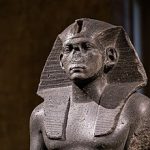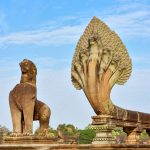Bust of King Amenhotep III Wearing the Blue Crown
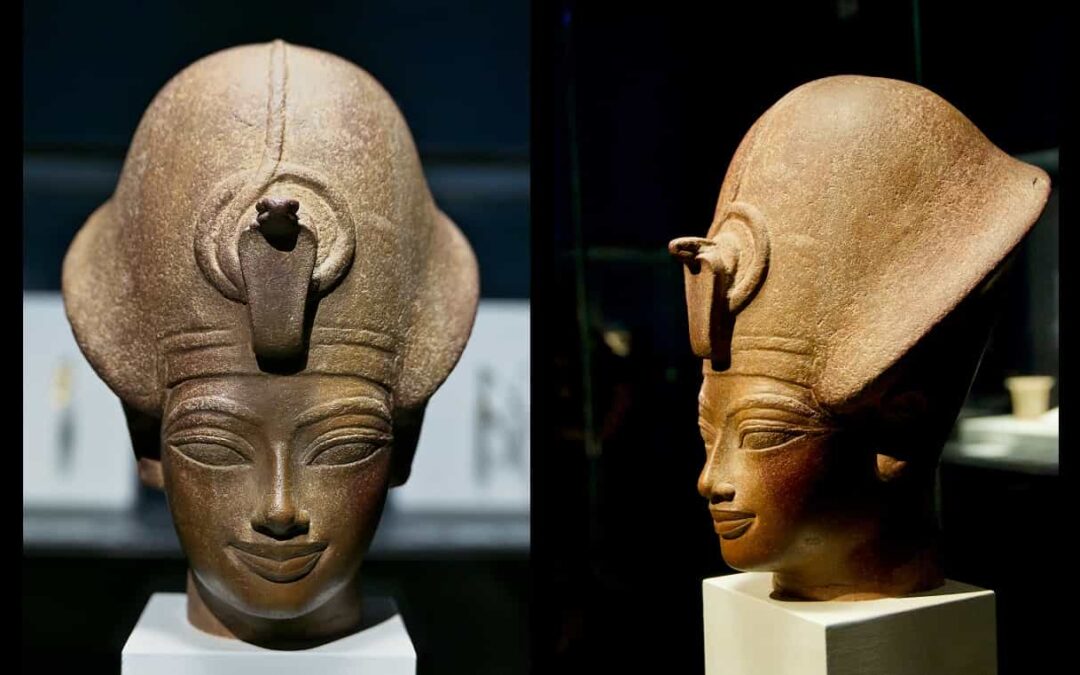
Bust of King Amenhotep III Wearing the Blue Crown
This quartzite bust depicts King Amenhotep III adorned with the blue crown, a symbol of royal authority and military power . Measuring 24 × 20 × 16 cm, it dates to the New Kingdom, 18th Dynasty, ca. 1350 BC. Now housed in the British Museum, the sculpture reflects the refined artistry and majesty of one of Egypt’s most powerful pharaohs .
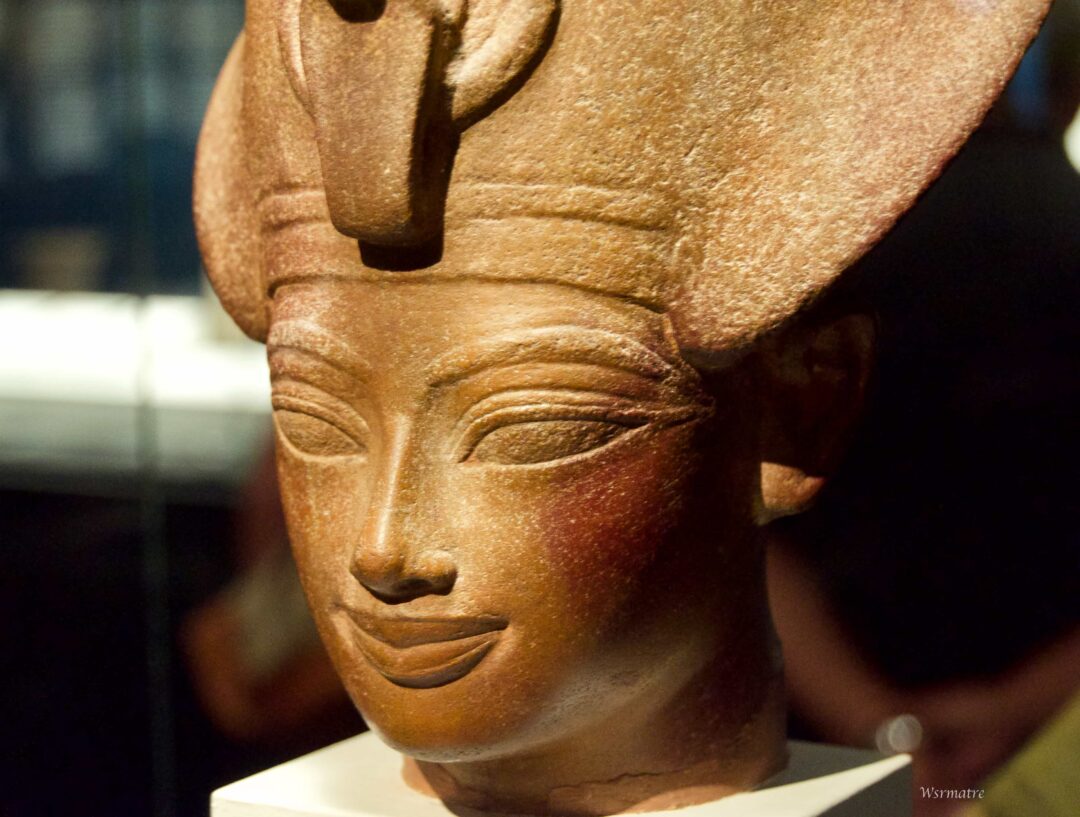
The king is shown wearing the khepresh, or blue crown, a royal headdress that is rounded at the top and features a flared ridge descending on both sides above the ears. The crown is adorned with a dotted circular pattern, adding texture and detail to its surface. At the center of the forehead rests the uraeus cobra, its coiled body forming circular loops and its long tail extending backward across the top of the crown.
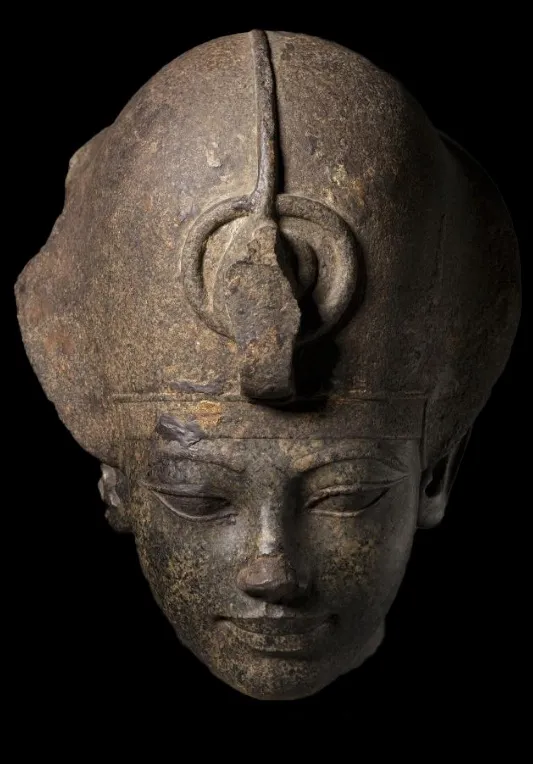
Beneath the uraeus, two finely incised horizontal bands run along the front edge of the crown. The king’s facial features are delicately rendered, with arched brows and elongated, narrow eyes that stretch elegantly toward the temples. The outer corners of the eyes are sharply slanted, while two subtle engraved lines between the eyes and brows suggest a natural fold of flesh. His nose is slender, and his lips are full and slightly upturned, forming a faint, serene smile.
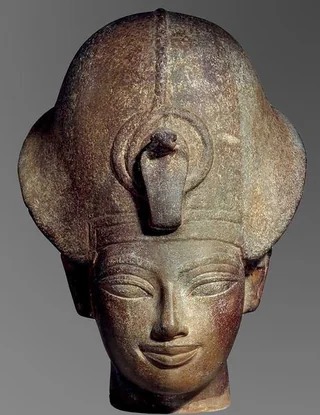
At the back of the neck, traces of a round-topped back pillar are still visible. The surface of the stone shows minor wear, including light scratches across the face and crown, as well as a small chip on the left side near the uraeus. Additional tiny chips can also be seen along the ridge at the back and right side of the crown.

